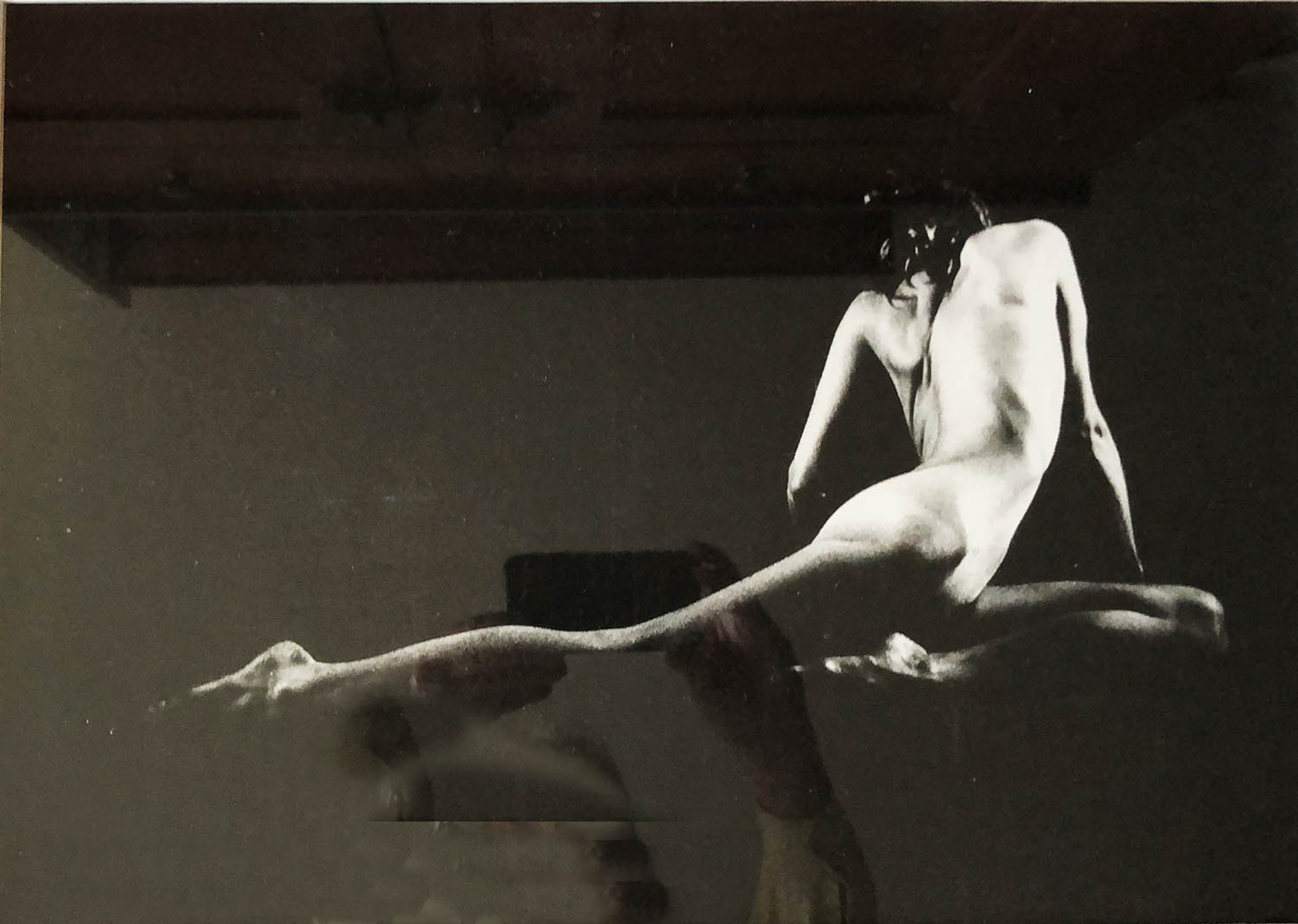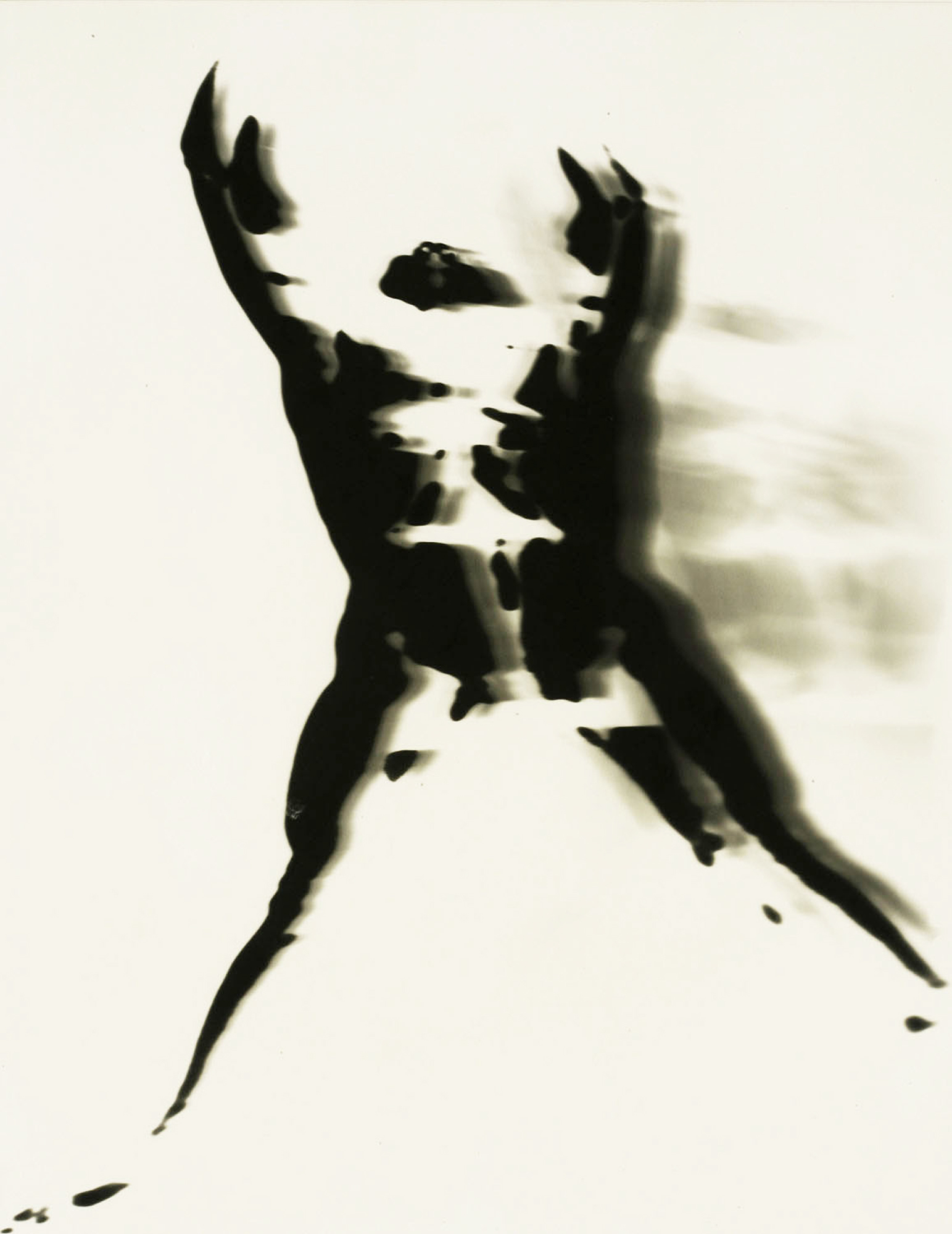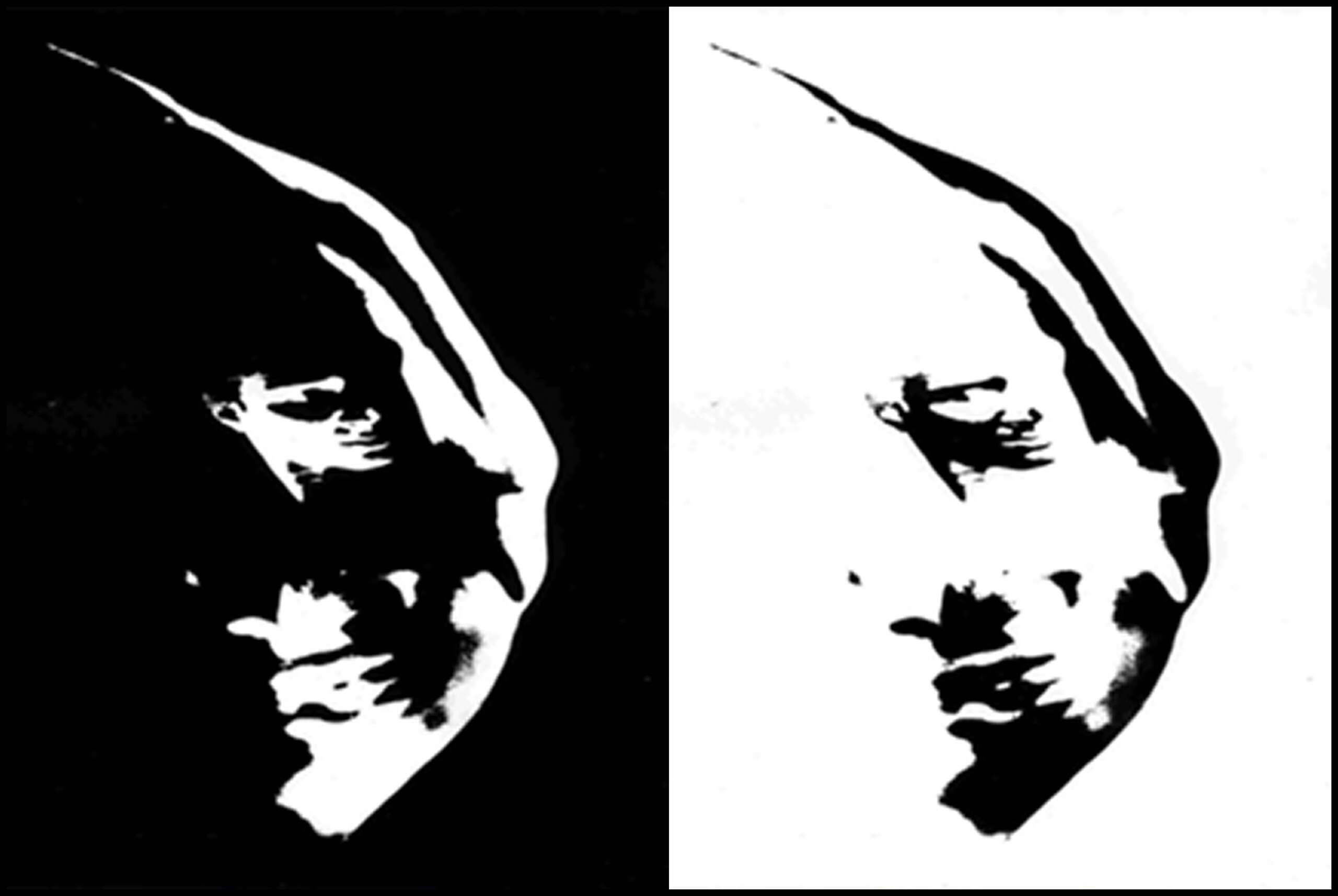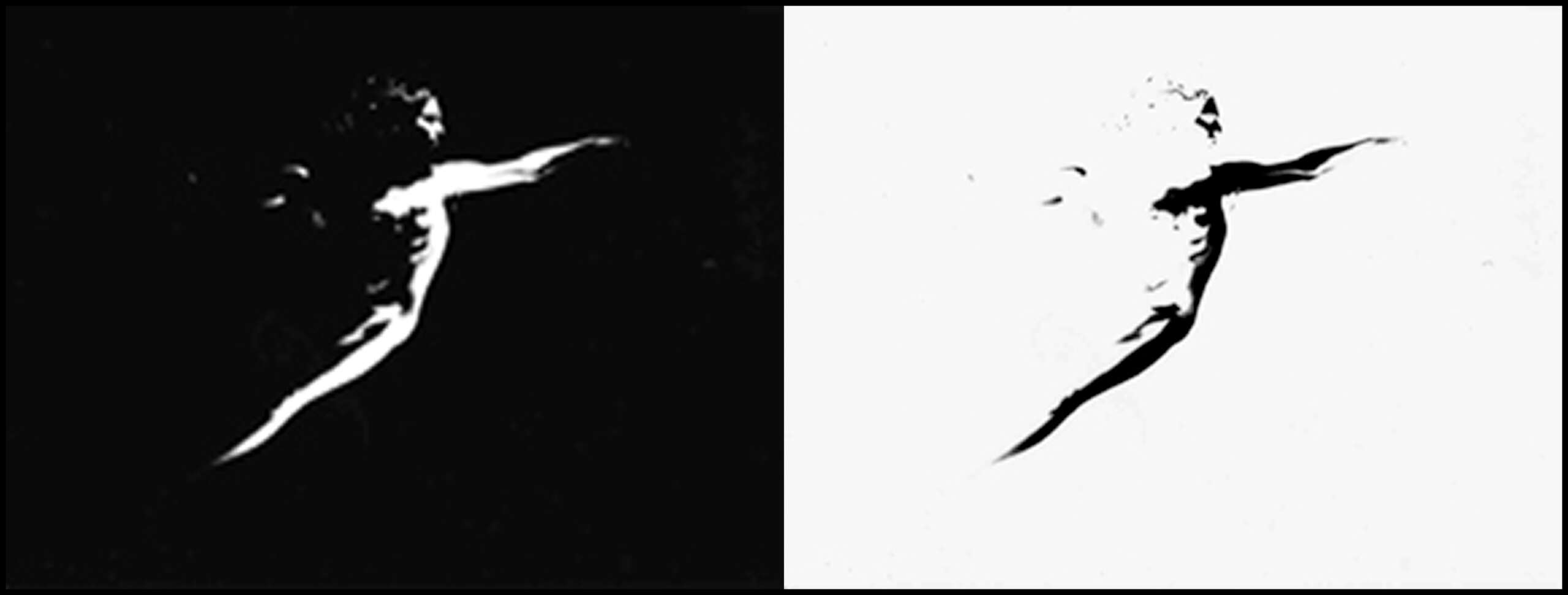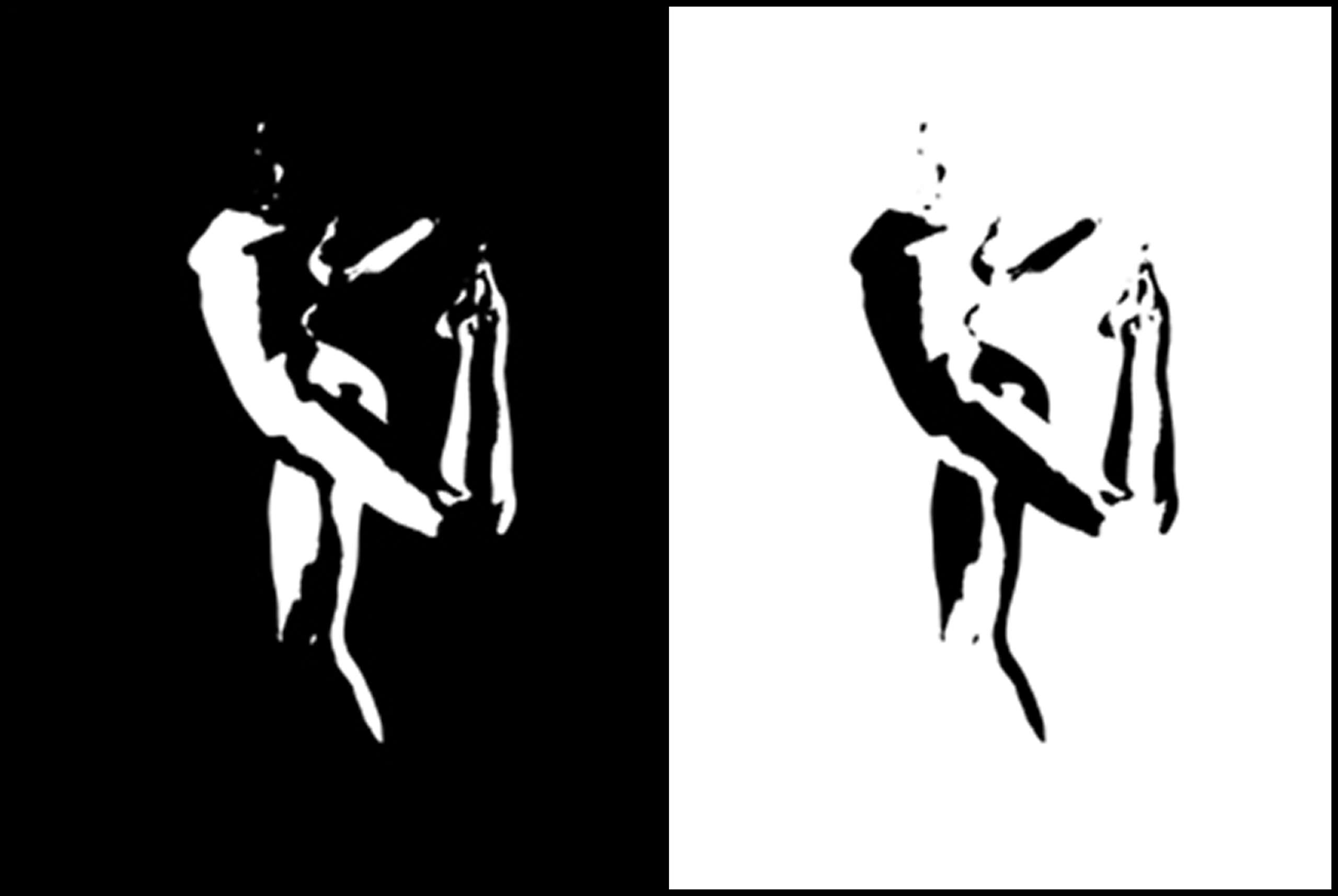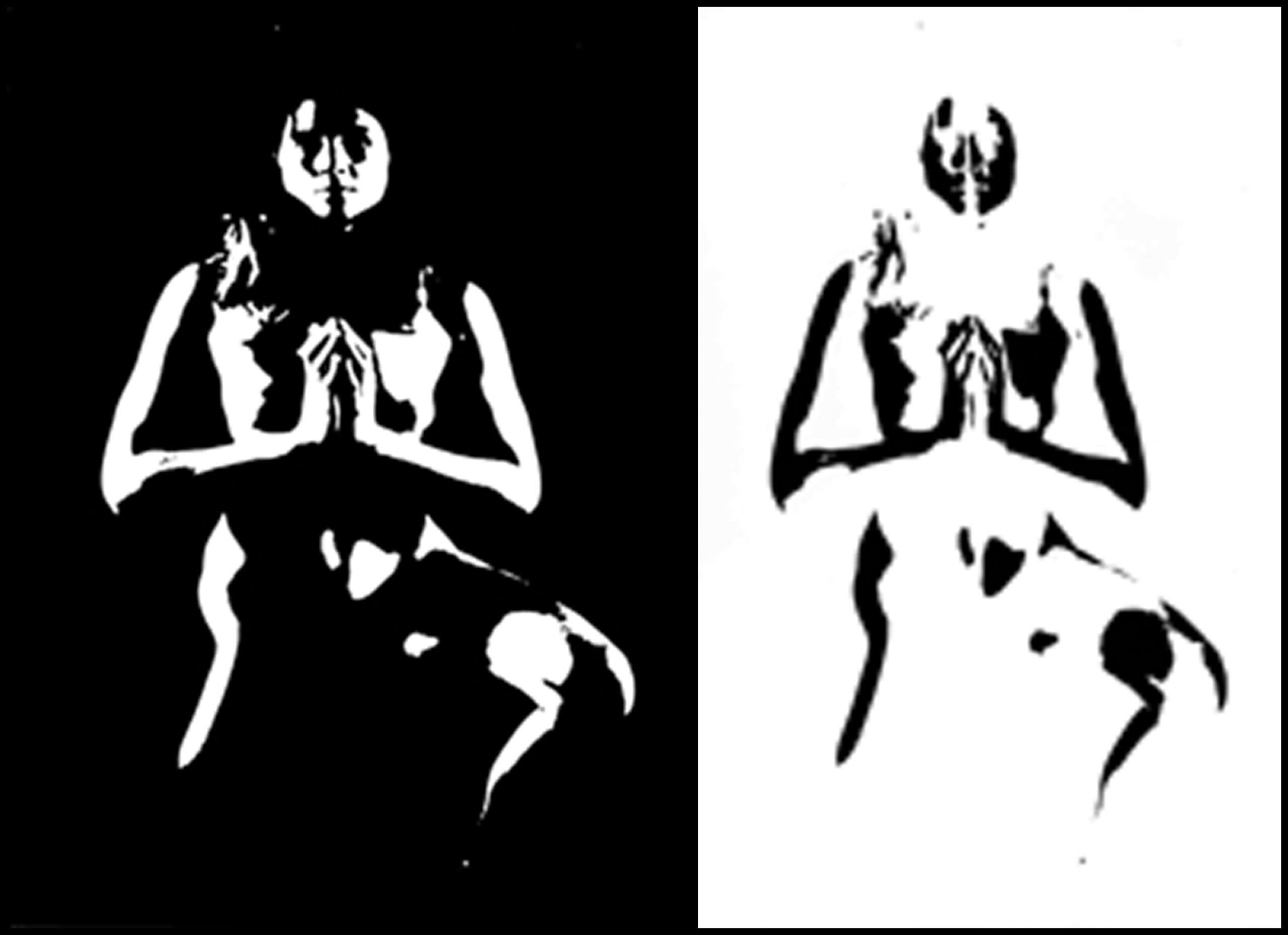Homage to Jackson Pollock
The inspiration for these two series of photographs— “Clignancourt (Paris)” and “La Spiaggia” — originated in the Museum of Fine Arts in Boston. I love museums and visit them often. On this particular day I was looking at a painting I had seen many times before—Jackson Pollock’s #10-1949—a narrow horizontal, one of his famous drip paintings. But as I looked closely, I saw that he had trimmed the canvas (photographers would say he cropped the image) after he had finished painting it; he had cut it out of a larger whole.
I cannot explain why noticing a few hanging threads of a canvas provoked such an epiphany, but I instantly believed that I could photograph as Jackson Pollock painted—as crazy as that sounds. In some strange way seeing his cropping released my imagination. It took me a while to work out my technique and find appropriate subjects, but what I’ve done is very close to what I envisioned that first instant.
The format of my photographs is roughly similar to Pollock’s #10-1949—long and narrow. I cannot “drip” photographic images, but I have sought to fill up the frame edge to edge—without any horizon—much as Pollock did. Another similarity is the controlled randomness—I am conscious of what I’m doing, but I don’t know exactly how it’s going to turn out.
As for the technique, I run the film through the camera twice without attempting to align the negative frames—the black lines visible on the prints. Thus the double exposures are not precise. I do not try to remember what I’ve photographed frame by frame. Once I begin, however, I do photograph continuously, completing both exposure runs at the same place and under the same light conditions. Exposure is calculated by doubling the film’s ASA.
The resulting prints represent only a small section of the continuous negative strip—about 5 or 6 frames out of a 36-frame roll. The negatives were scanned but not otherwise altered. The prints are printed on an ink jet printer and measure approximately 12 inches wide by 7 to 9 feet in length.
Clignancourt (Paris)
The first subject I found was the Clignancourt flea market (Les Puces) in Paris, a vast jumble of antiques and relics of every sort from furniture and rugs to jewelry, bric-a-brac and art of all description. I call Clignancourt the world’s attic. It covers more than 12 acres and is the largest flea market in the world. I feel that the intricacy of the double exposed photographic imagery is perfectly attuned to the jumble and clutter of the flea market.


La Spiaggia (Cinque Terre)
The La Spiaggia (beach) series was taken in Monte Rosso, Cinque Terre during the summer when people flock to the beach to relax and to play. I was able to photograph from an embankment above which added to the graphic quality of the beach below. Whether on a towel or under an umbrella, sun-bathing or strolling, reading, playing or eating, life on the beach creates an interesting visual mixture that I found conducive to photograph in the same way as the Clignancourt series.
Homage to Jackson Pollock
The inspiration for these two series of photographs— “Clignancourt (Paris)” and “La Spiaggia” — originated in the Museum of Fine Arts in Boston. I love museums and visit them often. On this particular day I was looking at a painting I had seen many times before—Jackson Pollock’s #10-1949—a narrow horizontal, one of his famous drip paintings. But as I looked closely, I saw that he had trimmed the canvas (photographers would say he cropped the image) after he had finished painting it; he had cut it out of a larger whole.
I cannot explain why noticing a few hanging threads of a canvas provoked such an epiphany, but I instantly believed that I could photograph as Jackson Pollock painted—as crazy as that sounds. In some strange way seeing his cropping released my imagination. It took me a while to work out my technique and find appropriate subjects, but what I’ve done is very close to what I envisioned that first instant.
The format of my photographs is roughly similar to Pollock’s #10-1949—long and narrow. I cannot “drip” photographic images, but I have sought to fill up the frame edge to edge—without any horizon—much as Pollock did. Another similarity is the controlled randomness—I am conscious of what I’m doing, but I don’t know exactly how it’s going to turn out.
As for the technique, I run the film through the camera twice without attempting to align the negative frames—the black lines visible on the prints. Thus the double exposures are not precise. I do not try to remember what I’ve photographed frame by frame. Once I begin, however, I do photograph continuously, completing both exposure runs at the same place and under the same light conditions. Exposure is calculated by doubling the film’s ASA.
The resulting prints represent only a small section of the continuous negative strip—about 5 or 6 frames out of a 36-frame roll. The negatives were scanned but not otherwise altered. The prints are printed on an ink jet printer and measure approximately 12 inches wide by 7 to 9 feet in length.
Clignancourt (Paris)
The first subject I found was the Clignancourt flea market (Les Puces) in Paris, a vast jumble of antiques and relics of every sort from furniture and rugs to jewelry, bric-a-brac and art of all description. I call Clignancourt the world’s attic. It covers more than 12 acres and is the largest flea market in the world. I feel that the intricacy of the double exposed photographic imagery is perfectly attuned to the jumble and clutter of the flea market.


La Spiaggia (Cinque Terre)
The La Spiaggia (beach) series was taken in Monte Rosso, Cinque Terre during the summer when people flock to the beach to relax and to play. I was able to photograph from an embankment above which added to the graphic quality of the beach below. Whether on a towel or under an umbrella, sun-bathing or strolling, reading, playing or eating, life on the beach creates an interesting visual mixture that I found conducive to photograph in the same way as the Clignancourt series.
Collage
Searching for ways to abstract, continuing my early darkroom experimentation, I turned to collaging photographs. I applied tape and letters, pasted objects and transferred images onto the photographs and sometimes cut and shaped the prints as well. Later I was able to use more natural (in camera) ways to make abstract images (such as reflections) but for a brief period I had a lot of fun doing collage and produced a small series of interesting images.
Collage
Searching for ways to abstract, continuing my early darkroom experimentation, I turned to collaging photographs. I applied tape and letters, pasted objects and transferred images onto the photographs and sometimes cut and shaped the prints as well. Later I was able to use more natural (in camera) ways to make abstract images (such as reflections) but for a brief period I had a lot of fun doing collage and produced a small series of interesting images.
Hidden Persuaders
In 1980 Edwin Land, the founder of the Polaroid Corporation, offered me the use of the large experimental 20 x 24 Polaroid view camera and studio. One of only 5 built at that time, the camera is an enormous large-format view camera that produces 20″ x 24″ one-of-a-kind instant and peel-back prints.
As a street (versus studio) photographer who only used hand-held 35 mm cameras, initially I had no idea of what to do with this behemoth of a camera. I had to think. Eventually I did conceive of a way to use the 20 x 24 camera to satisfy my long-held desire for abstraction without manipulation; I decided to photograph pages of the New York Times Sunday Magazine that I had pre-selected for the imagery on both sides of the page.
By strobe-lighting the single sheet of paper from behind, both sides of the sheet appear in equal register, thus merging the images on the back-to-back pages. Enlarging the magazine pages to 20 X 24 inch photographs, the newsprint gave a soft texture to the prints. Like my reflections series, I had discovered another way of abstracting images. And, like reflections, all it took was light, albeit a powerful studio strobe.
Most of the magazine pages featured ads dealing with women’s fashion. I called this series “Hidden Persuaders,” referring to the subliminal messages included in advertising, especially as it uses (and exploits) images of women to sell product.
Exhibition Prints
20” x 24” unique prints (matted and framed to 29” x 35”)
Hidden Persuaders
In 1980 Edwin Land, the founder of the Polaroid Corporation, offered me the use of the large experimental 20 x 24 Polaroid view camera and studio. One of only 5 built at that time, the camera is an enormous large-format view camera that produces 20″ x 24″ one-of-a-kind instant and peel-back prints.
As a street (versus studio) photographer who only used hand-held 35 mm cameras, initially I had no idea of what to do with this behemoth of a camera. I had to think. Eventually I did conceive of a way to use the 20 x 24 camera to satisfy my long-held desire for abstraction without manipulation; I decided to photograph pages of the New York Times Sunday Magazine that I had pre-selected for the imagery on both sides of the page.
By strobe-lighting the single sheet of paper from behind, both sides of the sheet appear in equal register, thus merging the images on the back-to-back pages. Enlarging the magazine pages to 20 X 24 inch photographs, the newsprint gave a soft texture to the prints. Like my reflections series, I had discovered another way of abstracting images. And, like reflections, all it took was light, albeit a powerful studio strobe.
Most of the magazine pages featured ads dealing with women’s fashion. I called this series “Hidden Persuaders,” referring to the subliminal messages included in advertising, especially as it uses (and exploits) images of women to sell product.
Exhibition Prints
20” x 24” unique prints (matted and framed to 29” x 35”)
Yoga
A model, Linda Bates agreed to let me photograph her doing yoga. As beautiful as she was at six feet, I was not interested in typical nude photos. So I set up extreme side-lighting and used high contrast copy film to photograph her. This produced images of severely shaped body highlights and shadows rendered as abstract patterns without detail.
I then transferred the 35 mm negatives to medium format Kodalith film so that the negatives became positives. Printing from the Kodalith rendered the highlights black and the shadows white. The result was a series of abstract black figures on a white background.
In a few cases, to further abstract the images, while in the darkroom, I moved the paper during exposure, thus re-introducing motion into the images.
Yoga 1972-1973
High contrast black & white photographs of a model in yoga poses printed in both positive and negative versions, some manipulated
Exhibition Prints
22” x 28” prints from the Kodalith photographs
Yoga
A model, Linda Bates agreed to let me photograph her doing yoga. As beautiful as she was at six feet, I was not interested in typical nude photos. So I set up extreme side-lighting and used high contrast copy film to photograph her. This produced images of severely shaped body highlights and shadows rendered as abstract patterns without detail.
I then transferred the 35 mm negatives to medium format Kodalith film so that the negatives became positives. Printing from the Kodalith rendered the highlights black and the shadows white. The result was a series of abstract black figures on a white background.
In a few cases, to further abstract the images, while in the darkroom, I moved the paper during exposure, thus re-introducing motion into the images.
Yoga 1972-1973
High contrast black & white photographs of a model in yoga poses printed in both positive and negative versions, some manipulated
Exhibition Prints
22” x 28” prints from the Kodalith photographs















